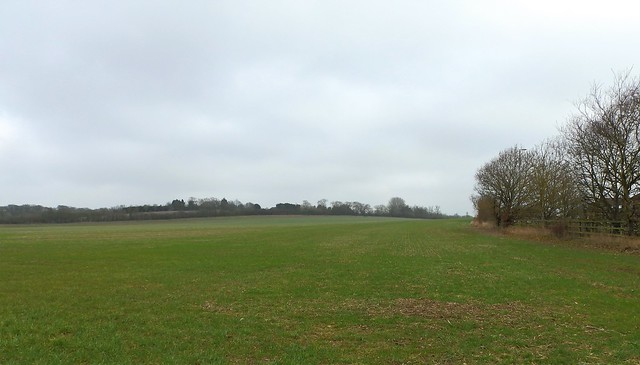What's in a name? Blake's Oak near Abingdon
"One Blake hung upon an oak in the way to Abingdon, beyond the half-way gate. This traitor betrayed three Christian kings, and would have betrayed the fourth ; upon which he was hanged, within two days after his design was discovered, upon the said oak, which is still called 'Blake's Oak.'
The wood was formerly a haunt of robbers, and here St. Edward* of Abingdon was once attacked by them, but his protestations of poverty being found to be true, he was allowed to proceed unharmed."
A Handbook for Travellers in Berks, Bucks, and Oxfordshire, London: J. Murray, 1860
A very small copse named Blake's Oak exists on land north of Abingdon near to where a proposed large housing development will be built. It lies relatively close to the slightly bigger Sugnell Copse and is adjacent to the main Oxford to Abingdon road. The OS Six Inch map (1888-1913) shows what is still effectively the modern extent of both copses (though I wonder if both copses were once joined as part of a larger woodland?)
 |
| Reproduced with the permission of the National Library of Scotland |
The origin story mentioned in the 1860 guidebook was chronicled by Anthony Wood in the 1660s, though it can be traced back to an Oxford antiquarian writing in the 1640s. In "Blake, General-at-Sea" by C D Curtis (1934), the author clarifies that the following excerpt originates from an account of the 1642 marches of the King's Army by Brian Twyne, which was later incorporated into Wood's diaries.
"On Wednesday 2nd November 1642, all the King's foot marched out of Oxford to Abingdon and so toward Henley; but in their passage and within a mile of Abingdon there was one Blake, a groom of the King's bedchamber, hanged on a tree for treason against the king; he should have betrayed the King and his two sons to the Earl of Essex at one Sir Robert Fisher's house."In the edition of Wood's diaries edited by Andrew Clark in the 1890s, Clark notes that the tree was still standing in Thomas Hearne's time in 1732. It is but a small tree, he apparently commented, is commonly called Blake's Oak, and is within two little miles of Abingdon.
The hanging of Blake takes place less than two weeks after the battle of Edgehill, an early and inconclusive encounter in the English Civil War. The King was trying to make his way to London at this point, ultimately unsuccessfully (leading to the Royalists making Oxford their capital, also garrisoning Abingdon). Sir Robert Fisher and his son Sir Clement Fisher MP were sympathetic to the Royalist cause, and Charles I and his sons stayed at Sir Robert's estate at Great Packington Hall in Warwickshire shortly before the battle of Edgehill.
Brian Tywne was an Oxford academic, a Fellow of Corpus Christi college, who lived between 1581-1644. His writings on the movements of the King's army would have been contemporary. Wood lived from 1632-1695 so his own account of the tale was still near contemporary.
"Wednesday (2 Nov.) all the foote men marched out of Oxford to Abington, and so toward Henly uppon Thames: but in their passage & within a mile of Abington, there was one Blake, a groome of the kinge's bedchamber, hanged on a tree for treason against the kinge:"
The Thomas Hearne mentioned by Clark was born in 1678 and died in June 1735; he also was an antiquarian, at one point second keeper of the Bodleian Library.
Another historic mention of the copse can be dated to 1849. The Fox-hunters Guide lists "Bagley or Blake's Oaks", 3 miles from Oxford on the Abingdon Road, as one of the places of meeting of 70 of the principal hunts in England and Wales. The much larger ancient woodland of Bagley Wood lies a short distance to the north and was seemingly much used for fox hunting. It's unclear whether "Blake's Oaks" is here being confused with Bagley Wood or whether the copse was indeed a place of meeting.
 |
| A peek through the hedge at trees near the tiny Blake's Oak copse north of Abingdon. Was it once bigger? |
Whatever its history, the area around Blake's Oak is about to receive a major transformation. Outline planning permission was granted in June 2017 for a major new housing development for north Abingdon which will bring a primary school and dwellings to the adjacent field, most of which has been taken out of Green Belt designation.
At the time of writing, building work has yet to begin though archaeological surveys were carried out in the field by Oxford Archaeology in June 2019.
 |
| View to Blake's Oak copse from Pen Lane |
Google Street View
Thanks for reading!
* Should probably be St Edmund
Do you enjoy photography? You can earn money from your pictures by signing up as a Shutterstock contributor.



Comments
Post a Comment